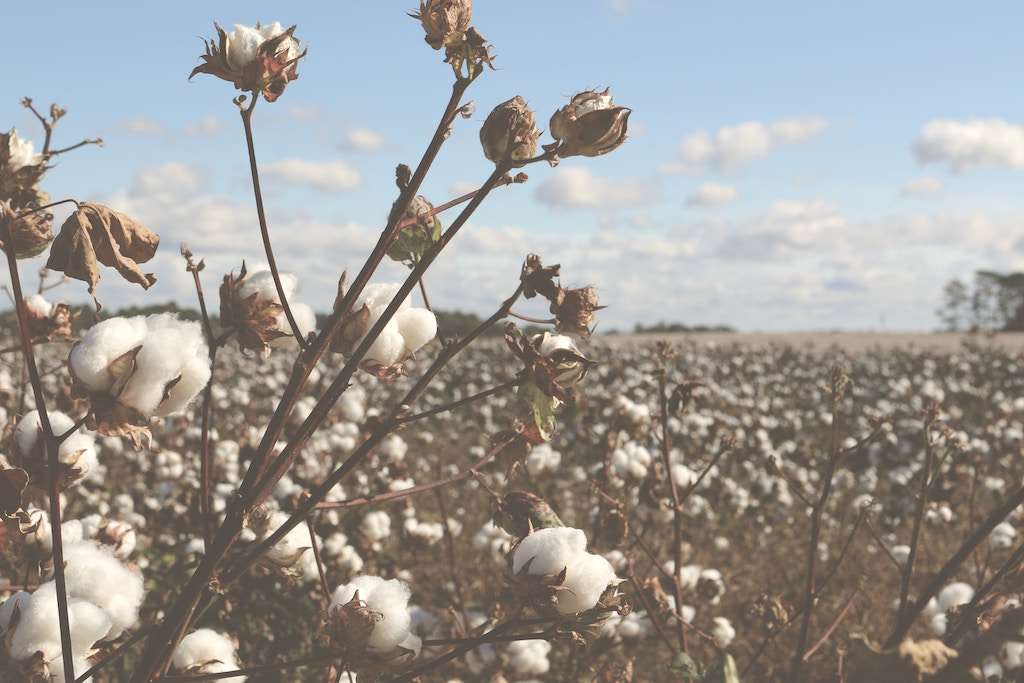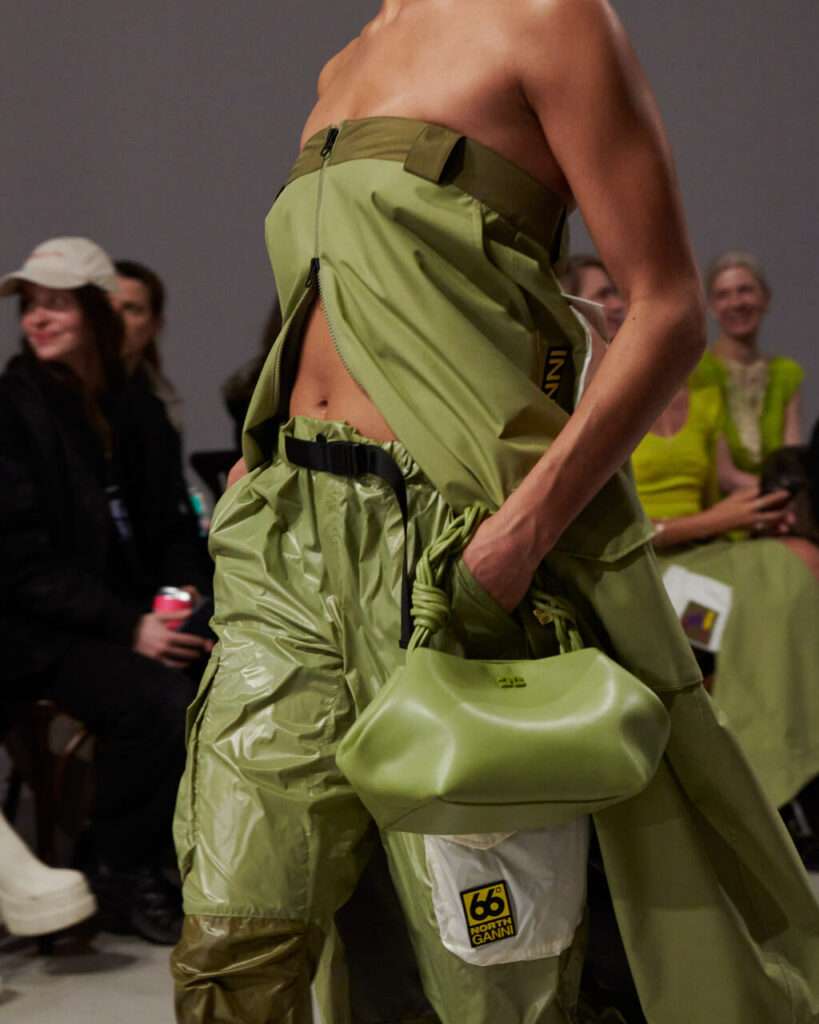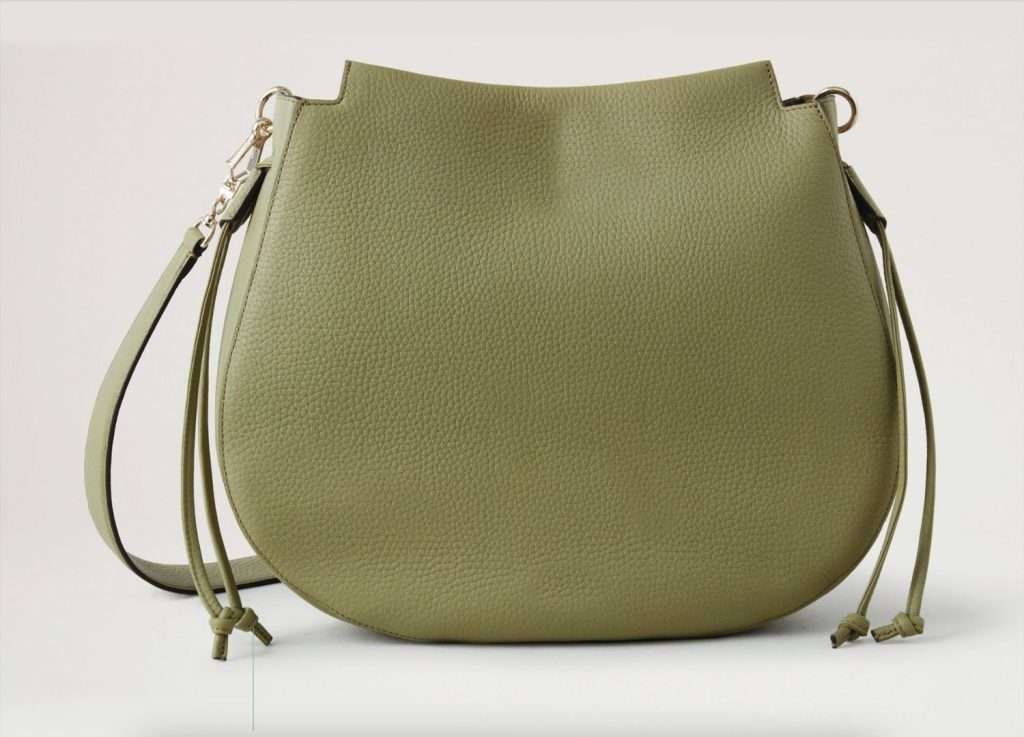With more than half of our modern wardrobe made from plastic-based fabrics, it’s easy to overlook their environmental downsides. But innovative and eco-friendly alternatives are on the rise, crafting a plastic-free fashion future.
In 2023, the allure of Barbie’s world captivated millions, thanks to Greta Gerwig’s billion-dollar big-screen interpretation. Regardless of whether you found yourself wearing an extra touch of pink, it turns out our wardrobes are more similar to that of the iconic doll than we might have thought. Although, perhaps not as extravagant as Barbie, most of us are also wearing a lot of plastic. Roughly 62 percent of our clothes are made from plastic-based materials. Today, fabrics like polyester and nylon are so commonplace that we don’t think twice about them.
Synthetic clothing comes with numerous environmental and health issues that are causing serious harm to the planet. Luckily, innovative alternatives to these synthetic materials are already on the rise, and offer us a chance to create a future that is remarkably less reliant on plastic.

What is synthetic clothing?
Synthetic fabrics are made from man-made processes, usually byproducts from the coal and petroleum industries. Unlike their natural counterparts, like bamboo, linen, or cotton, synthetic fabrics are created by processing these fossil fuels into fibers, which are then spun into cheap yarn and the tons of cheap clothing that end up in landfills every year.
Common synthetic fabrics:
Most of our wardrobes today are made up in large part by synthetic fabrics or synthetic blends. Among the most common, you’ll find:
- Polyester: Made primarily from PET, polyester is used for its wrinkle resistance and moisture-wicking properties. Because of these attributes, it’s often used in activewear and outerwear, as well as wrinkle-resistant blouses and shirts.
- Nylon: Nylon is made from polyamides and is known for its elasticity. You’ll commonly find it used for swimwear, activewear, and hosiery.
- Acrylic: Acrylic fibers are made from a synthetic compound called acrylonitrile, and are often used as a substitute for wool. Many synthetic sweaters are acrylic.
- PU/PVC: Polyurethane (PU) and polyvinyl chloride (PVC) are two plastics that are commonly used in fashion today to make leather substitutes. Many jackets and boots are made of PVC and PU.
History of synthetic fabrics
While we take these fabrics for granted now, synthetic fabrics are less than a century old, first coming into use in the 1930s. The first of these to be widely popularized was nylon, announced in 1938. It was used for hosiery, and admired for its flexibility, strength, and shine that natural fabrics available at the time did not have.
Because these fabrics were easy to produce and cheap to make, they quickly rose in popularity. This was especially true following the economic depression and the Second World War, when resources were scarce and low-cost materials were needed. In a relatively short time, synthetics became commonplace; by the ’90s, polyester had replaced cotton as the most common material for clothing.
What are the environmental issues of synthetic clothing?
While being low-cost and wrinkle-resistant might have its merit, the drawbacks to the use of these synthetic fabrics and controversial pleather are plentiful.

Fossil fuel reliance
As synthetics are derived from petroleum and coal, they omit nitrous oxide, a potent greenhouse gas. The fashion industry as a whole contributes ten percent of global greenhouse gas emissions and, while synthetic manufacturing is not the sole contributor, it has an enormous impact, especially considering that synthetics are the most commonly used fabrics today.
Micro-plastic pollution
When synthetic fabrics are washed, tiny particles shed off and flow into our waterways. These microfibers, also called microplastics, are flushed into the ocean, where they end up harming marine life and polluting air, soil, and food. An estimated 200,000 to 500,000 tonnes of microplastics enter the water environments from clothing every year.
Poor durability and non-biodegradability
Because of the low cost of producing synthetic fabrics, they are commonly used in fast fashion to make poorly produced garments that are meant to be discarded after a few wears. Plastic materials often do not age well; acrylic sweaters, for example, will commonly pill after a few wears and, unlike their wool counterparts, this pilling cannot be removed. This makes for a garment that quickly looks worn. All of this leads to a shortened lifespan of the garment.
And the challenges don’t stop there — not only are synthetic fabrics more likely to end up in a landfill, but they’re much more likely to stay there. Synthetic fabrics do not biodegrade like natural fabrics; polyester, for example, will take more than 500 years to decompose.

Why not just switch to natural fibers?
The natural reaction (no pun intended) after learning of the horror stories of synthetics is to swear to stick to only natural fabrics, which are derived from plants and animals. While the benefits of natural fabrics include biodegradability and no microfibers, there’s unfortunately more to the story.
Animals like sheep and cattle contribute to land deforestation and methane production, coming with an onslaught of environmental woes. Plant-based options, like cotton, often rely on heavy usage of pesticides and consume copious amounts of water in the growing process; it takes approximately 2,700 liters of water just to make one cotton t-shirt. (That’s enough drinking water for one person for well over two years!) It’s safe to say that not all natural fibers are created equal.
While looking for certifications such as the Global Organic Textile Standard (GOTS), which ensures safe pesticide practice and ethical production, is a way to tease out the worst offenders, it’s clear that other options are needed.
A plastic-free future: bio-based innovations
A plastic-free future would clear us of many of the environmental challenges that fashion imposes today. For scalable adoption, alternative fabrics need to maintain the positive benefits that plastics provide today, like elasticity, wrinkle resistance, and water resistance. Additionally, they need to improve the eco-friendly nature. This includes having lower water usage, no reliance on fossil fuels, and being biodegradable.
Turns out, we’re in luck — pioneers in fashion and material innovation are finding ways to do just that.
Lab-grown fabrics

Replacing cow leather and plastic leather with lab-grown materials.
Innovative companies are creating vegan and plastic-free alternatives by fermenting food waste and growing it into fabrics and materials. Not only do these materials utilize waste products, eliminate greenhouse gas emissions and maltreatment of animals and land, but they are also uniquely beautiful materials that lend themselves to new designs and interpretations.
Polybion is one such pioneering company in this space, using fermented fruit waste that can be grown to different thicknesses depending on need. Another innovative company using this process is Spiber, which makes fabrics from brewed protein from plant sources. It is creating alternatives for a variety of fabrics, including fleece, leather, furs, knits, and woven fabrics.

Agricultural waste fibers
Creating fabric from plant waste products.
Cotton, the most widely used plant fiber today, requires extensive land and water use dedicated solely to its cultivation. Imagine, instead, using the unused parts of plants that are already grown for food; that’s exactly what new materials like Bananatex are doing. This company is finding ways to utilize more sustainable plant fibers from banana leaf waste, which reduces the material’s ecological footprint.
Piñayarn is another material that makes use of pineapple leaf fibers, a byproduct of pineapple cultivation. This material is plant-based and biodegradable. Because these fibers are made from agricultural waste, no extra land or water is used to create the fiber, which is drastically different from the role of something like cotton. Material from cactus, wine grapes, and other foods are also being turned into materials with a range of uses. Desserto’s cactus leather, for example, has seen applications across fashion, from shoes to bags, as well as in automobiles through a recent collaboration with BMW.

Bio-Based Synthetics
Processing plants products to create eco-friendly synthetics.
Man-made is often said with a negative connotation, particularly due to its association with fossil fuel sourcing, as seen in traditional synthetic fibers. But, if fibers for polyester could be derived from something other than fossil fuels, were 100 percent compostable, and were biodegradable, then the story of man-made fabrics would have a different tone.
Kintra is at the forefront of making this idea into reality, deriving its fibers from corn and sugar instead of fossil fuels and petroleum. The result is a strong fabric, softer than polyester, stretchy, and comes with a 95 percent reduction in emissions.
The options continue to impress; one company, Wastea, is turning spent tea leaves into a bio-based material, solving not only the need for more sustainable materials but also a secondary market for the second most consumed beverage in the world.
_____________________________________________________________

Jackie Warehime is a New York-based designer and sustainability advocate with a background in product design. She writes about sustainable design at www.jackiewarehime.com, with the goal of exploring and expanding the ethical and sustainable approaches to crafting the world we live in.
Related on Ethos:


